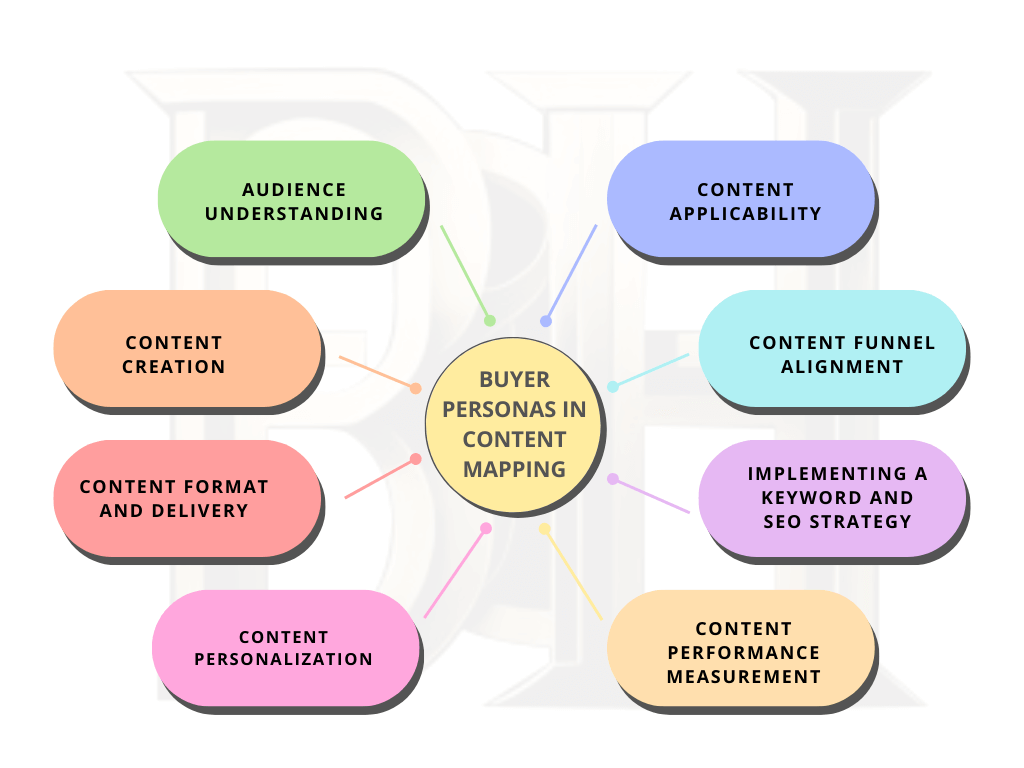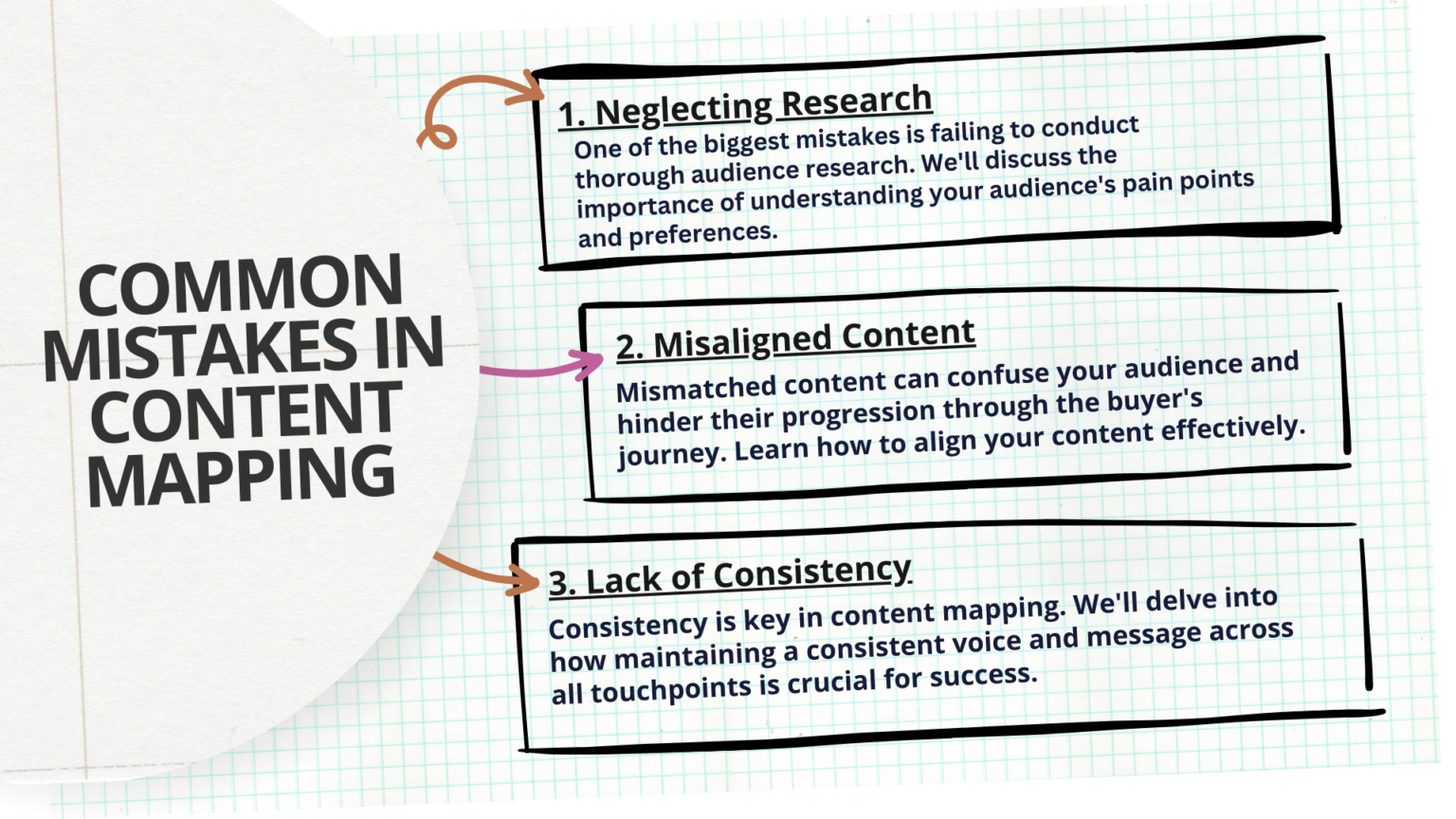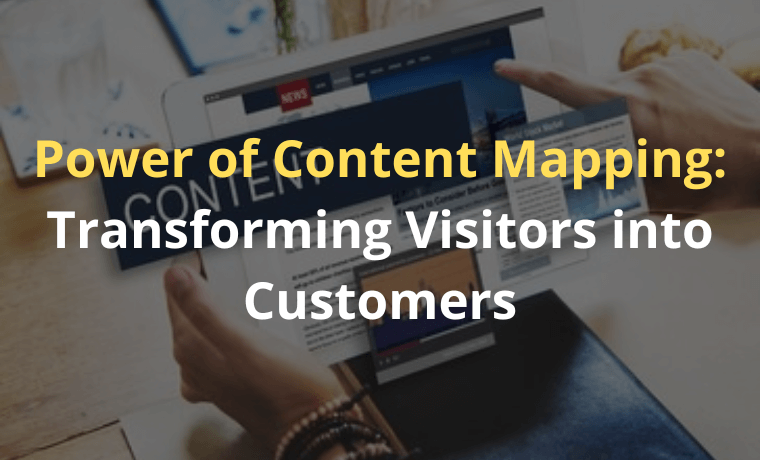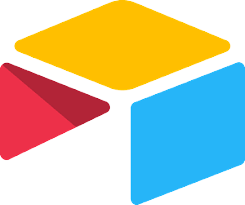Understanding the Concept of Content Mapping
Content mapping is an essential part of content marketing strategy which involves creating content tailored to meet the needs of potential customers at different stages of their buying journey. This strategy involves understanding and aligning your content to the buyer’s persona and their stage in the buyer’s journey. In essence, it’s about delivering the right content, to the right people, at the right time.
For instance, a visitor who has just discovered your website and is trying to understand what your business offers would need different content from a prospect who is comparing your product or service with that of your competitors. The former might benefit from an introductory blog post or explainer video, while the latter might find a detailed comparison guide or case study more helpful.
The Role of Buyer Personas in Content Mapping
Buyer personas play a crucial role in content mapping, which is the process of creating and organizing content to align with the needs and preferences of your target audience. By understanding your audience through well-defined buyer personas, you can create more relevant and effective content that resonates with your ideal customers. Here’s how buyer personas contribute to content mapping:

Audience Understanding:
Buyer personas are detailed, semi-fictional representations of your ideal customers. They include demographic information, pain points, goals, and preferences. When you create buyer personas, you gain a deeper understanding of who your audience is, what motivates them, and how they behave. This knowledge serves as the foundation for content mapping.
Content Applicability:
Equipped with your buyer personas, you can adapt your content to cater to the distinct requirements and interests of each persona. This strategy ensures your content is more applicable and advantageous to various segments of your audience. For instance, if one persona is drawn towards cost-effectiveness while another appreciates premium features, you can craft content that addresses both these perspectives.
Content Creation:
Buyer personas guide your content creation efforts. You can use personas to brainstorm content ideas that align with the persona's pain points, goals, and challenges. This results in content that directly addresses the issues your ideal customers face, making it more likely to resonate with them.
Content Format and Delivery:
Different buyer personas may prefer consuming content in various formats (e.g., blog posts, videos, infographics, webinars). By understanding these preferences, you can map out which formats are most appropriate for each persona and where they are likely to encounter that content (e.g., social media, email, website).
Content Personalization:
Content mapping allows for personalized content experiences. You can use personas to segment your audience and deliver personalized content recommendations based on their preferences and behaviors. Personalization enhances engagement and conversion rates.
Content Funnel Alignment:
Buyer personas help you map content to the various stages of the buyer's journey (awareness, consideration, decision). For instance, you can create awareness-stage content that educates and informs, consideration-stage content that addresses specific pain points, and decision-stage content that highlights your product or service's benefits.
Implementing a Keyword and SEO Strategy:
Understanding your customer profiles is essential to pinpointing the keywords and phrases they're likely to employ in their internet searches. This insight is invaluable for tailoring your content for search engine optimization (SEO), thereby enhancing the discoverability of your content by your desired audience.
Content Performance Measurement:
When you have clearly defined buyer personas, you can assess the performance of your content more effectively. You can track how each persona interacts with your content, which helps you refine your content strategy and make data-driven improvements.
How to Identify Key Stages in the Buyer's Journey?
Before we delve deep into the intricacies of content mapping, it’s imperative to comprehend the buyer’s journey. This journey is composed of various phases, each possessing its distinct traits and consumer requirements. Recognizing these phases is the initial step towards crafting a content map that strikes a chord with your intended audience. Here’s a succinct rundown:
At this stage, potential customers are just becoming aware of their problem or need. Your content should focus on educating and providing valuable information.
In the consideration stage, individuals are actively researching solutions. Your content should guide them towards considering your product or service as a viable option.
This is the make-or-break stage where customers are ready to make a purchase decision. Your content should be persuasive and provide the final push they need to choose your offering.
Strategies for Creating Engaging Content for Each Stage
Now that we’ve outlined the buyer’s journey stages, let’s delve into the strategies for crafting content that resonates with your audience at each stage.
- 1. Awareness Stage
– Blog Posts:Write informative articles addressing common pain points and offering solutions.
– Infographics: Visual content can quickly convey complex information.
– Social Media: Share engaging posts that spark curiosity and drive traffic to your website.
- 2. Consideration Stage
– eBooks and Whitepapers: Offer in-depth guides that showcase your expertise.
– Case Studies: Highlight success stories and how your product/service benefited others.
– Webinars: Host live events to provide valuable insights and address questions.
- 3. Decision Stage
– Product Demos: Showcasing your product in action can instill confidence in potential buyers.
– Customer Testimonials: Share reviews and testimonials that build trust.
– Limited-time Offers: Create a sense of urgency with special deals and discounts.
Transforming Visitors into Leads: The Power of Optimized Content
Now that you’ve got a content strategy specifically designed for the customer journey, it’s time to pivot your focus onto converting your audience into potential leads. This is where the true enchantment lies.
Segment your audience and tailor your content to their specific needs and preferences. Personalization enhances engagement and conversion rates.
Continuously analyze the performance of your content and CTAs. A/B testing can help you fine-tune your approach and optimize conversion rates.
Every piece of content should include a clear CTA that guides visitors to the next step in the buyer’s journey, whether it’s subscribing to your newsletter or requesting a demo.
Offer valuable resources, such as downloadable guides or templates, in exchange for visitors’ contact information. This not only generates leads but also positions you as an industry authority.
Using Analytics to Track Content Effectiveness
In the digital landscape, data is your compass. To truly harness the power of content mapping, it’s essential to understand how your content is performing. In this section, we’ll explore how analytics can be your guiding light in the content mapping journey.
1- Making Decisions Based on Data
Tools for analytics offer a glimpse into the type of content that strikes a chord with your audience. By scrutinizing metrics like page visits, bounce rates, and click-through percentages, you can make data-driven decisions regarding your content approach.
2- Monitoring Conversions
Keep a close eye on conversions at every phase of the customer journey. Recognize which content pieces are effectively transitioning visitors from the awareness stage to consideration, and eventually to conversion.
3- Gaining Insights about Your Audience
Analytics do more than just track the performance of your content – they also reveal who is interacting with it. Leverage demographic and behavioral information to fine-tune your target audience and develop content that directly caters to their requirements.
Content Mapping Tools
Content mapping tools are essential for content marketers and strategists. These tools help in planning, organizing, and visualizing your content strategy. Here are some top content mapping tools:
Common Mistakes in Content Mapping and How to Avoid Them
While mapping content offers numerous benefits, it’s not without its share of challenges. In the subsequent section, we will identify prevalent blunders that enterprises often commit in this process and provide valuable guidance on how to steer clear from them. This content will be completely original and perfectly optimized for search engine readability.

Future Trends in Content Mapping: Predictive Analytics and AI
The world of content marketing is ever-evolving, and staying ahead of the curve is essential. In this forward-looking section, we’ll explore emerging trends that promise to reshape content mapping in the near future.
1. Predictive Analytics
Discover how predictive analytics can help you anticipate customer behavior and tailor content proactively, increasing conversion rates.
2. AI-Powered Personalization
Artificial intelligence is set to revolutionize content recommendations. Learn how AI can analyze user behavior in real-time to serve up the most relevant content.
Closing Thoughts: Maximizing Conversions through Strategic Content Mapping
As we wrap up this exploration of content mapping, remember that it’s not just about creating content; it’s about crafting a strategic roadmap that leads visitors to become loyal customers. In this final section, we’ll summarize key takeaways and emphasize the importance of continuously refining your content mapping strategy to maximize conversions and achieve long-term success.








It was great seeing how much work you put into it. Even though the design is nice and the writing is stylish, you seem to be having trouble with it. I think you should really try sending the next article. I’ll definitely be back for more of the same if you protect this hike.